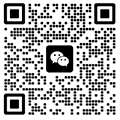

Basic Structure: [Verb] + [Resultative Complement]
The resultative complement is usually an adjective or another verb.
Common Examples:
把水果洗干净。 (Wash the fruit clean.)
我的作业做完了。 (My homework is done.)
他说中文,我听懂了。 (He spoke Chinese, and I understood.)
我看了,但是没看见。 (I looked, but I didn't see it.)
看见 (kànjiàn) - 看 (look) + 见 (perceive) = to see
听懂 (tīngdǒng) - 听 (listen) + 懂 (understand) = to understand (what one hears)
做完 (zuòwán) - 做 (do) + 完 (finish) = to finish doing
洗干净 (xǐ gānjìng) - 洗 (wash) + 干净 (clean) = to wash something until it's clean
Negative Form:
Place "没(有)" before the verb and its resultative complement.
Example: 我没听见你的话。 (I didn't hear what you said.)
Potential Complement: Insert "得" or "不" between the verb and the resultative complement to indicate "can" or "cannot."
看得见 (kàn de jiàn) - can see
听不懂 (tīng bu dǒng) - cannot understand (by listening)
Example: 这里太吵,我听不清。 (It's too noisy here, I can't hear clearly.)
Summary: Resultative complements pack two concepts (action + result) into one concise verb phrase. This is key to making your Chinese sound more natural.
Add:NO.151 Xidazhi Street,Nangang Strict,Harbin,Heilongjiang P.R. China,150001
BINCIA CHINESE COLLEGE

